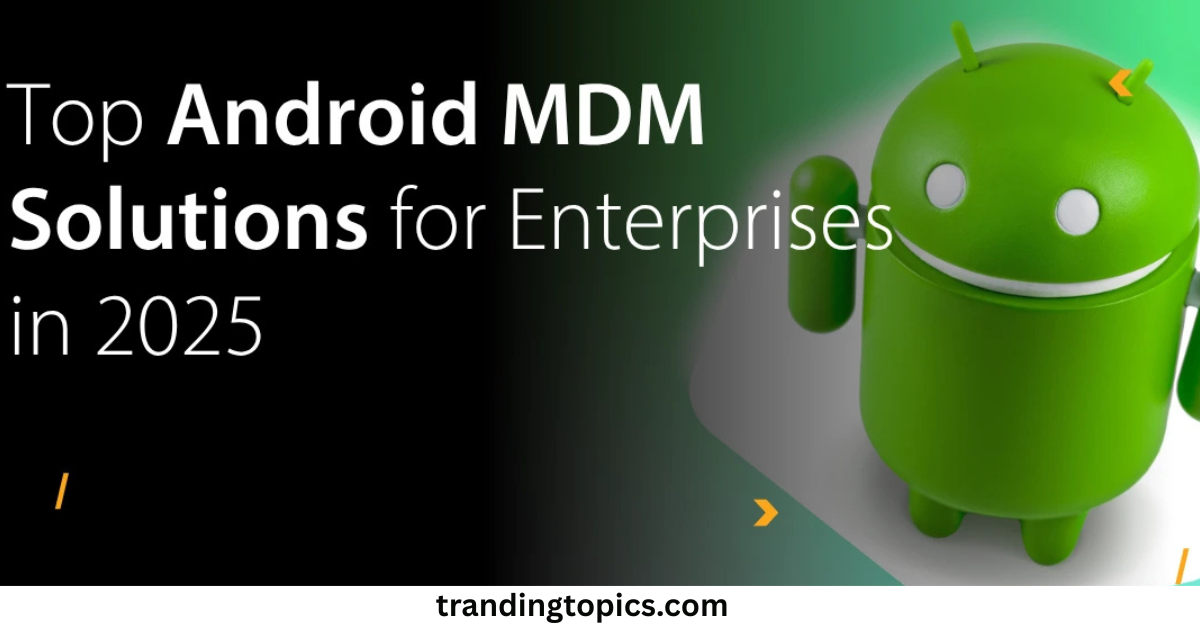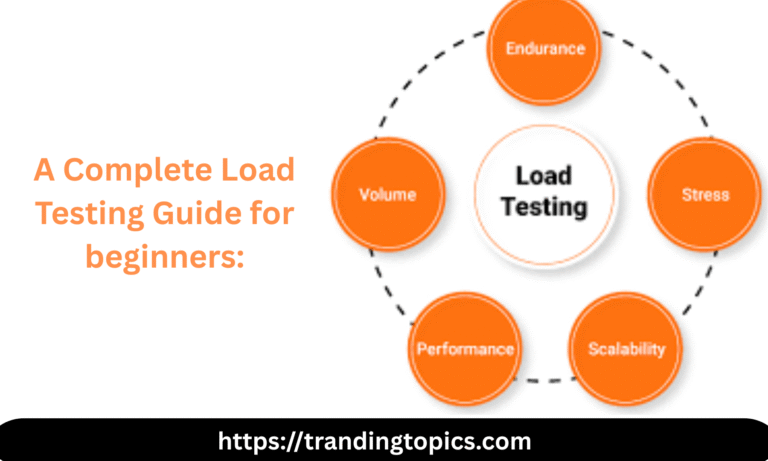5 Best Android MDM Software for Your Business in 2025
Introduction
In 2025, mobile device management (MDM) is vital for organizations due to Android’s 70% global market share (StatCounter). The job of IT admins in maintaining cellphones, tablets, and rugged field devices is more important than ever as businesses rely on them more and more, especially for remote teams.
With robust Android MDM software, businesses can monitor, secure, and enforce policies across all of their devices from a single dashboard. It supports BYOD policies, enabling admins to push apps, and may remotely lock or wipe devices if needed. The tool simplifies device provisioning, ensures enterprise mobile security, and enhances operational efficiency.
Given the increased hazards and device dependency, investing in the correct MDM solution is no longer optional—it’s strategic. Businesses are encouraged to sign up for a free MDM trial to enjoy greater control and protection throughout their Android fleet.
What is Android MDM?
MDM (Mobile Device Management) software enables businesses to manage, secure, and monitor mobile devices like smartphones, tablets, and laptops. IT administrators use it to manage device settings, enforce security policies, and remotely distribute software updates. This ensures that all mobile devices comply with business IT policies, including VPN enforcement, password requirements, and app restrictions, thereby protecting sensitive business data while supporting a flexible workforce.
Android MDM refers to any mobile device management solution designed specifically to manage Android devices. It improves security, boosts device performance, and simplifies management for IT teams supporting a mobile-first workforce. With Android holding a 71.65% global market share in the second quarter of 2024, choosing the right MDM for an Android-centric environment is essential. These solutions help enforce policies, manage devices remotely, and maintain efficient and secure operations.
Key Features of an Android MDM Solution:
Device enrollment.
Onboarding and adding new Android devices to the MDM platform can be done either manually or through an automated process.
Remote configuration.
An MDM has the power to remotely configure device settings to provide consistent and secure configurations across all devices.
App management.
The ability to deploy, update, and uninstall apps on an Android smartphone. This ensures that users have access to the necessary tools and prevents them from installing unapproved programs on their devices.
Security policies.
The capability to implement security measures, such as password complexity requirements, screen lock timeouts, and data encryption, to secure sensitive information.
Device location tracking.
A function that enables enterprises and IT teams to trace the whereabouts of lost or stolen devices. This also allows administrators to remotely erase or lock devices to protect sensitive data and prevent unauthorized access.
5 Advantages of Android MDM Software
1. Enhanced security
Having a powerful mobile device management solution for your Android devices helps protect critical company data by enforcing appropriate security policies and restrictions. An MDM solution also decreases the risk of data breaches and illegal access from people or entities that are not supposed to gain valuable company information.
2. Improved productivity
A reliable Android MDM solution simplifies device provisioning and configuration while also enabling IT managers to provide remote troubleshooting and support, reducing downtime. This leads to greater efficiency and productivity for both IT personnel and end-users.
3. Cost reduction
An Android MDM can help reduce IT support costs by automating routine device management tasks.
Additionally, it minimizes the costly replacement of lost or stolen gadgets by implementing a tracking component. This can lead to huge cost reductions for a company.
4. Compliance adherence
Another benefit of using an Android MDM is that it helps ensure compliance with industry regulations and corporate policies, allowing devices to meet required standards and avoid potential legal issues.
5. Better user experience
A reliable Android MDM solution makes sure workers have a safe and reliable mobile experience, which boosts productivity and makes important tasks easier. It also helps simplify device setup and management for end-users, speeding up onboarding processes so staff can begin their activities immediately.
The top 5 Android MDM Software:
1; NinjaOne
NinjaOne is an automated endpoint management platform that helps IT professionals and organizations by automating the hardest parts of IT and giving them real-time visibility, security, and control over managed endpoints. One of the things NinjaOne can help with is managing mobile devices. The platform’s MDM lets companies support, automate, manage, and protect mobile devices that are linked to the office and access company data. The IT solution works with the most prevalent operating systems, but NinjaOne MDM evolves to keep up with the rise in popularity of Android devices in the business world by including further support for Android devices used by companies.
Key features of NinjaOne Android MDM
Straightforward deployment.
To enhance productivity, bulk enrollment of Android devices should be fast. NinjaOne ensures that onboarding new devices is rapid and reduces the pain of complicated configuration and time-consuming tasks.
Efficient device management.
NinjaOne’s Android MDM solution encourages organizations to manage different Android devices, from company-owned to employee-owned or BYOD (Bring-Your-Own-Device). This unified method allows organized control and consistent policy implementation across all devices.
Application management.
NinjaOne’s application management gives enterprises peace of mind that their infrastructure is safeguarded. It regulates programs that should be installed in managed Android devices, preventing unwanted software installations. This feature also supports single-app kiosk mode when required, making it suitable for specific use cases such as point-of-sale systems or digital signage.
Scalable policy enforcement.
NinjaOne’s Android MDM allows enterprises to define, manage, and enforce detailed policies across their entire fleet of devices. With centralized control, they can set security rules, control app usage, and apply configurations to maintain compliance and consistency across all devices.
Reliable security capabilities.
Organizations that emphasize securing their data can benefit from NinjaOne Android MDM. The platform’s MDM solution offers remote actions that enable enterprises to lock or wipe devices, reset passcodes, and set device restrictions in cases of loss or theft.
NinjaOne MDM also enables tools to impose device limitations, enforce encryption, and manage access controls. All these security functions help ensure that managed Android devices are secured with the highest security requirements.
Stellar support.
NinjaOne has a healthy focus on client success, helping the platform give trustworthy customer assistance. The IT solution provides customer-focused services like free, unlimited onboarding, training, and support, helping users get the most out of the platform. According to a third-party poll of over 380 MSPs, NinjaOne is also ranked #1 in support and service.
The same poll has given NinjaOne an average of a 98% CSAT score and a 65-minute average initial response time, indicating that the IT platform cares for the success of its customers.
|
Pros |
cons |
|---|---|
|
Integrated patch leadership |
Limited customization in alerting methods |
|
Complete user role management |
Deep learning curve |
2. Scalefusion
Scalefusion is a powerful Android MDM solution trusted by thousands of enterprises around the world. It delivers seamless device provisioning, policy enforcement, and deep management over Android smartphones, tablets, rugged devices, and Android-based POS systems. With an intuitive interface, fast deployment, and great customer support, Scalefusion is designed to simplify Android device management for IT teams of all sizes.
Whether you’re locking down tablets in retail, distributing shared devices in education, or managing mobile fleets in logistics, Scalefusion adapts with simplicity. Its compatibility for both company-owned and employee-owned devices ensures flexibility without compromising security.
Key features of Scalefusion Android MDM
Kiosk mode:
Lock devices into single- or multi-app mode for business-specific use situations like POS, digital signage, or front-line access.
Remote Cast & Control:
Troubleshoot devices in real time utilizing remote screen sharing and control, reducing downtime and IT issues.
Work the profile & BYOD:
Create separate work profiles on personal devices to ensure corporate data stays secure without harming user security.
App & Content Management:
Push, install, disable, or update apps remotely. Manage documents and multimedia files across devices.
Location Tracking & Geofencing:
Monitor device location in real-time and enforce policies based on geographic zones, ideal for logistics and field teams.
Role-Based Access & Policy Enforcement: Control who can access the dashboard and assign policies based on roles, teams, or regions.
Automated Workflows: Use scheduling and triggers to automate device upgrades, lockdowns, and compliance checks.
|
Pros |
Cons |
|---|---|
|
Enhanced security: Provides accurate steps to protect device data. |
Device notification processing: Managing notifications on devices could create certain issues, according to some visitors. |
|
User-friendly interface: Simplifies device management for managers. |
Navigation: While the solution is feature-rich, several customers commented that it takes time to become used to browsing the platform’s various functionalities. |
|
Network settings: It is capable of managing Wi-Fi networks, hotspots, and data roaming settings. |
Configuration setup: Initial setups could be better by adopting a guided procedure to make them less complicated, according to other users. |
Pricing Insight:
Plans typically start around $2–$3 per device/month with different feature tiers. A free trial is available for testing before purchase.
If your business requires an Android MDM that’s robust yet easy to use, Scalefusion gives exceptional value and scalability.
3. Miradore
Miradore offers a cloud-based Android MDM platform that blends simplicity with key security and administration capabilities.. Perfect for enterprises just starting their mobile management journey, Miradore allows IT teams to enroll devices quickly and implement appropriate policies without steep learning curves.
This Android MDM software supports both corporate-owned and personal devices and is noted for its clear UI, fast onboarding, and affordability.
Key features
Cloud-based management.
Allows remote device setup, monitoring, and updates over a web interface.
Compliance enforcement.
Ensures devices satisfy GDPR, HIPAA, and other requirements.
Automation possibilities.
Reduces burden with automatic installations and patch management.
Best Suited For:
Startups and small businesses with limited IT resources often benefit from simplified Android MDM solutions.
Schools and non-profits searching for simple device control.
Organizations working with a small fleet of Android tablets or phones.
Pricing Insight:
Miradore offers a free plan with fundamental features. Premium options with greater capabilities start at roughly $2.75 per device/month.
Miradore is a straightforward and economical entry point into Android mobile device management.
|
Pros |
Cons |
|---|---|
|
Flexible licensing. Provides customizable models to fit the needs of different companies. |
Filtering data: Some users feel that Miradore could be improved by adding more filtering options and displaying more detailed information in list views. |
|
Insightful analytics. Real-time screens and reports for data-driven decisions. |
App management: Others suggested that adding apps may be enhanced by making it less cumbersome and more streamlined. |
|
User-friendly setup. Simple onboarding and intuitive UI for device control. |
Patch installation scheduling: Patch installs can’t be planned outside work hours, according to some customers, preventing crucial updates from being pushed to devices. |
4. SureMDM (by 42Gears)
SureMDM by 42Gears is built for high-demand applications and gives extensive control over Android devices, especially hard devices used in the field. It’s highly customizable, secure, and equipped with options that go beyond ordinary Android device administration.
SureMDM supports not only Android smartphones and tablets but also IoT devices, bespoke firmware packages, and devices in harsh conditions.
Key Features:
Remote Control & Screen Sharing:
Fix issues on the fly with real-time device access and testing.
Advanced Kiosk Mode:
Lock devices into single/multi-app settings with advanced branding and navigation controls.
Cation Tracking:
Set virtual limits and monitor device mobility for logistics and field teams.
Telecom Expense Management:
Track mobile data, call, and SMS usage to help manage and control costs.
App & Content Deployment:
Share internal or visible apps across devices with a few clicks.
Workflow Automation:
Automate repetitive operations like compliance checks, upgrades, and device provisioning.
Reports & Analytics
Visual dashboards for usage, compliance, and device health.
Best Suited For:
Field services and logistics personnel employ tough devices.
Manufacturing and utilities sectors.
Businesses with big Android device fleets in challenging situations.
Pricing Insight:
Pricing normally starts at $3–$4 each device/month. Custom company pricing is provided for larger deployments.
SureMDM is the Android MDM solution of choice when flexibility, automation, and control are essential.
|
Pros |
Cons |
|---|---|
|
Inventory: Offers capability for hardware and software supplies. |
Occasional lag: Some according that there were moments when the platform slowed down, hurting productivity |
|
User-friendly interface: Simplifies device monitoring and management. |
Push updates: Others noticed that devices that are regularly offline may occasionally have difficulty upgrading when they come back online. |
|
Reliable support: Provides personalized help for the best device deployment. |
Learning curve: Navigating the platform’s functions may need time to understand or even learning for some users. |
5. IBM MaaS360
IBM MaaS360 is an enterprise-level Android MDM platform that integrates AI-powered mobile device management through its Watson connection… It gives comprehensive visibility, contextual security insights, and seamless app and data control across Android devices.
It’s a great tool for firms with huge, distributed teams and secure regulatory standards.
Key Features:
Unified endpoint management.
Can manage endpoints running on diverse systems on a centralized console.
Risk-based insights.
Delivers real-time device risk evaluations and protections.
Seamless onboarding.
Assistance with over-the-air enrollment for fast setup and deployment.
|
Pros |
Cons |
|---|---|
|
Comprehensive security. Integrates mobile threat defense with device management. |
Reporting: Some customers have noted that IBM MaaS360’s reporting features could be improved by offering greater flexibility and more customization options. |
|
User-friendly interface. Makes device monitoring and policy apply. |
Initial setup.: Some customers encountered concerns with the platform’s initial setup procedure, suggesting that it might be enhanced to be less complex. |
|
Flexible BYOD support. Allows personal and corporate device policies. |
Support: Others pointed out that customers could benefit from speedier service, easing troubleshooting circumstances. |
Find the Android MDM That Grows With You
Deciding on your organization’s finest Android mobile device management (MDM) solution starts with establishing your specific demands, such as security protocols, device compatibility, and scalability. Next, you have to compare the features supplied by different MDM suppliers. This requires emphasis on important capabilities, including remote access, app administration, and compliance tools. User evaluations can also provide insights into the real-world performance of the MDM you are evaluating, helping you understand the potential issues and benefits others have experienced. Finally, you can request a demo or trial period to assess the product in your environment, ensuring it fulfills your company’s requirements before committing.
Final Thoughts
MDM solutions enable you to effortlessly manage the mobile endpoints of all your devices and enhance security across your entire enterprise. Whichever MDM software option you decide on, consider deployment, integrations, security, and user experience when evaluating the system.







